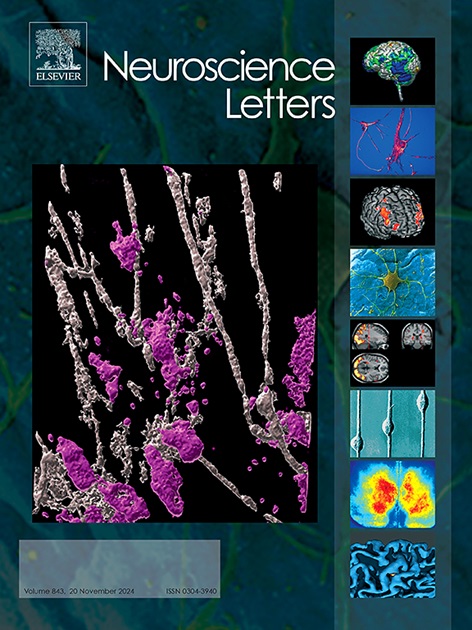图形符号创造性思维过程中的脑电图α能量。
IF 2.5
4区 医学
Q3 NEUROSCIENCES
引用次数: 0
摘要
图形符号创作——将抽象概念转化为视觉形式——是一项复杂的认知技能,也是人类独有的技能。神经生理学证据表明,振荡的α活动与视觉-形象的创造性思维有关。然而,α振荡是否在生成图形符号中发挥功能作用仍不清楚。为了解决这个问题,我们比较了40名健康成年人在构思代表抽象概念含义(例如“和平”这个词)的创造性和传统图形符号时的脑电图α功率。我们的研究结果表明,图形符号的构思引起了α同步,与创造性条件相比,常规条件下的α同步水平更高,主要在额-中央、额-颞、顶叶-枕和枕部区域。此外,在两种情况下,我们观察到右半球比左半球更大的α同步,特别是在颞、中央-顶叶和顶叶电极之间。在创造性条件下,这种不对称延伸到中央电极,而在传统条件下,这种不对称在顶叶-枕叶区域更为明显。最后,我们还发现,在创造性构思阶段,额叶和枕叶α同步预测了随后产生的图形符号的独创性得分。总之,这些发现增强了我们对图形符号创造过程中振荡α活动动态的理解,揭示了抑制性自上而下控制机制和认知灵活性过程之间的相互作用如何促进抽象概念向视觉形式的转化。这些发现为人类独特能力背后的神经过程提供了新的见解。本文章由计算机程序翻译,如有差异,请以英文原文为准。
EEG alpha power during creative ideation of graphic symbols
Graphic symbolic creation—transforming abstract concepts into visual forms—is a cognitively complex and uniquely human skill. Neurophysiological evidence suggests that oscillatory alpha activity is correlated with visual-figurative creative thinking. However, whether alpha oscillations play a functional role in generating graphic symbols remains unclear. To address this issue, we compared the EEG alpha power of 40 healthy adults while ideating creative and conventional graphic symbols representing an abstract concept’s meaning (e.g., the word ’peace’). Our results revealed that the ideation of graphic symbols elicited alpha synchronization, with higher levels in the conventional compared to the creative condition, mainly over frontal-central, frontal-temporal, parietal-occipital, and occipital regions. Furthermore, we observed greater alpha synchronization in the right hemisphere than in the left across both conditions, particularly between temporal, central-parietal, and parietal electrodes. This asymmetry extended to central electrodes in the creative condition, while in the conventional condition, it was more pronounced over parietal-occipital regions. Finally, we also found that frontal and occipital alpha synchronization during the creative ideation phase predicted the subsequent originality scores of the graphic symbols produced. Together, these findings enhance our understanding of the dynamics of oscillatory alpha activity during graphic symbol creation, shedding light on how the interaction between inhibitory top-down control mechanisms and cognitive flexibility processes facilitates the transformation of abstract concepts into visual forms. These findings provide new insights into the neural processes underlying this uniquely human ability.
求助全文
通过发布文献求助,成功后即可免费获取论文全文。
去求助
来源期刊

Neuroscience Letters
医学-神经科学
CiteScore
5.20
自引率
0.00%
发文量
408
审稿时长
50 days
期刊介绍:
Neuroscience Letters is devoted to the rapid publication of short, high-quality papers of interest to the broad community of neuroscientists. Only papers which will make a significant addition to the literature in the field will be published. Papers in all areas of neuroscience - molecular, cellular, developmental, systems, behavioral and cognitive, as well as computational - will be considered for publication. Submission of laboratory investigations that shed light on disease mechanisms is encouraged. Special Issues, edited by Guest Editors to cover new and rapidly-moving areas, will include invited mini-reviews. Occasional mini-reviews in especially timely areas will be considered for publication, without invitation, outside of Special Issues; these un-solicited mini-reviews can be submitted without invitation but must be of very high quality. Clinical studies will also be published if they provide new information about organization or actions of the nervous system, or provide new insights into the neurobiology of disease. NSL does not publish case reports.
 求助内容:
求助内容: 应助结果提醒方式:
应助结果提醒方式:


